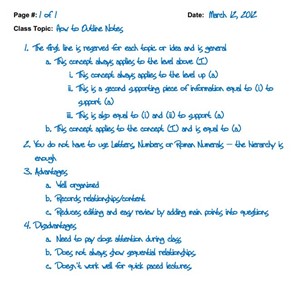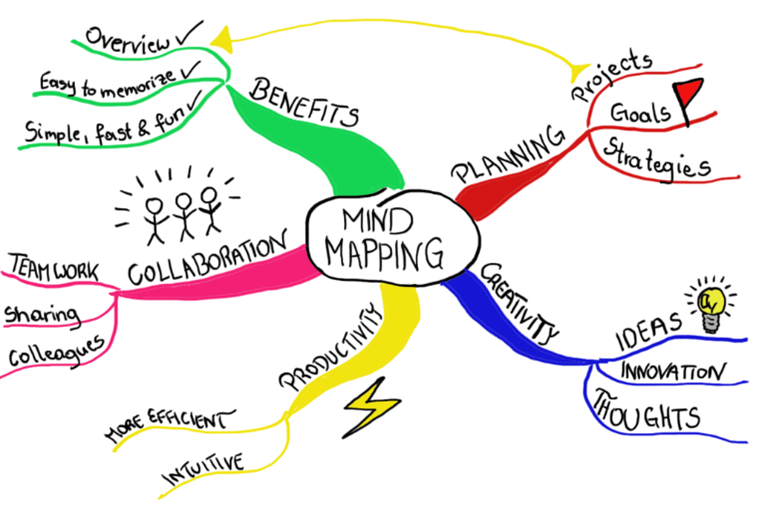Active Reading and Note Taking
Active Reading & Note Taking
Have you ever read the same sentence five times and you still can’t take in what it says? We all have, and it can be very frustrating. Active reading strategies can help you to not just read the words on a page, but to really take in their meaning. If you use these strategies in your studying, then your overall comprehension of the material will increase. Thus, your studying will be more efficient, and you will be more confident in your abilities and your understanding.
Active Reading Strategies
(P)SQ3R: This is an active reading tool for any kind of reading, but especially for textbook chapters. Simply reading a textbook chapter does not set you up for success. Chances are you will quickly forget the information, or you won’t fully understand it. Using a studying tool like (P)SQ3R only takes up a bit more time and it drastically increases your ability to recall and understand the information.
- Preview: This isn’t included in typical SQ3R methods, which is why it’s in parentheses, but it is an important step in the learning process. In this step you want to preview what you already understand about a topic, if anything. What do you know about this topic? Have you had a previous class on it? Do you have any lived experiences that have taught you something about this topic? As students you know much more than you probably realize, and it is important to understand what knowledge you are already bringing to a topic or class.
- Survey: Now you will want to open the chapter itself, but just skim it. You want to get a general idea of what the chapter is about by reading the introduction, the conclusion, any study questions, and any charts, graphs or pictures. You might also go back to preview and realize that you know a few more things after surveying the chapter.
- Question: This helps frame your reading and gives you a goal. What are the main things you want to learn from reading this chapter? You can also try turning headings into questions. If the heading is “The Battle of Saratoga” you can ask “What happened during the Battle of Saratoga?”
- Read: Now you want to actually read the chapter to look for answers to the questions you created. Take notes using a note-taking method (some listed below) or highlight the text. You want to engage with the text in some way to help you remember the main points later.
- Recite: After reading, look back at the questions you created as well as any already included in the chapter. Did you answer them? If not, go back and look for the answers.
- Review: Put the material down for at least a few hours, work on something else or take break. Then return to the material within a day and review what you learned, keeping note of any outstanding questions for you to ask your professor.
(https://in.nau.edu/academic-success-centers/sq3r-reading-method/)
Defining Terms: This strategy is one of the simplest ways that you can work on your active reading. It is based on understanding terminology and determining what is important in a text.
- When you are reading, write down terms that are highly important to the topic at hand. These terms could be section headers, they might be bolded in the text, or you might have to determine if they are important based on context. Also write down any terms that are unfamiliar to you, but try not to look them up while you are reading (unless you cannot understand the main point of the text without that term.)
- After you are done reading, go back and define the terms in your own words. For the terms that you were unfamiliar with, try to define them yourself first, based on context-clues. If you are unable to, don’t worry, go ahead and look them up. Star these terms (or bold them if you are typing) so that you can pay special attention to those terms when studying.
Who? What? Where? When? Why? How?: This strategy helps you categorize what you are reading into smaller pieces. This method is particularly useful for primary source materials in humanities classes, but can be used for any type of reading that has a clear author and point of view. This is not as useful for textbook chapters.
This method calls for you to format your notes into 6 columns, labeling each column with “Who,” “What,” “Where,” “When,” “Why,” and “How.” As you are taking notes, you will place your notes in the proper column. When you are done with the reading, revisit your columns and fill out any columns that are particularly short or that are blank, particularly “why” and “how” usually need to be revisited.
- Who: This column is about the author and the audience. When you are taking notes, keep an eye for where the author's perspective, or bias, shows in the text. Keep an eye out for phrases like “I am approaching this from the perspective of…” or “I disagree with X on…” Remember that bias is not an inherently bad thing because everyone has a perspective; it is up to you as the reader to determine what it is. Also keep an eye out for anything about the audience. Who is this text intended for?
- What: This column deals with the main argument of the text. What is the author saying? This will probably be the longest column. There might be overlap between this and the “Who” column and that is okay. Sometimes arguments contain biases or certain perspectives. These columns are not rigid, but rather guides to help you sort through information.
- Where and When: These columns are where you will put notes that are related to places or times. These columns will probably be the shortest, and certain categories might not be relevant to all texts. For example, “when” will be especially relevant when reading a historical text. But “where” might be more relevant for global studies. In general these categories are about context, and helping you understand the world in which the author is existing.
- Why: This column is about the purpose behind the text. Why did the author write it? Look for phrases like “My goal with this article is to….” Or “I wrote this because….” Think about if the text is trying to convince people of something or advocate for a certain course of action.
- How: This column relates to how the author accomplishes that goal. What methods do they use? It could be logic, emotion, precedent, authority, or a host of other methods. Look for the ways they try to convince the reader that their argument is correct or valid.
Note-Taking Tools
Learning effective note-taking strategies is essential to any kind of active reading. These tools will help you organize information as you are taking notes, which contributes to your overall understanding of the material. It will also help when you are preparing for tests or essays because your information will be organized and easily accessible.
Cornell Notes: It is possible that you are already familiar with the Cornell style of note-taking, as it is sometimes taught in high school. This method hinges on visual organization of your notes and kickstarts the learning process through a summary.
- During Class/Reading: First, you will write the title of the lecture or chapter on the top of your paper. Then you will separate your page, as indicated by the image below. During class you will take notes on the right side. Write as much or as little as necessary so that you will understand it later.
- Immediately After Class: Write headers to organize your notes on the left side, called the cue column. This can be main ideas, title slides from the lecture, questions, or study prompts. You may also do this during the lecture if there is a short break.
- During Later Study Time (but no less than 24 hours after class): At the bottom of your page, write a summary of the lecture/chapter in your own words. This will help ensure that you understand the material and will refamiliarize you with the information. When studying for tests or projects later in the semester, use your headers and cues to quickly sort through your notes to find the necessary information.

If this method is useful to you, you can download various styles of pre-formatted Cornell notes for your computer. https://templatelab.com/cornell-notes/#google_vignette
Outlining: This strategy is good for people who have an organizational mind. It shows relationships between different ideas through the idea of nesting or outlining. As you take notes, you will organize the information in terms of main points and related points. Start with the first main point, and then nest any related points as shown below. When the lecture or reading moves on to a new topic, you move on to the next number and repeat the process.

Word Maps: Word maps are useful for people who like the idea of an outline, but it feels too regimented for them. Word maps still show the relationship of ideas through the idea of nesting, but this uses a freeform, more unique, format. Write the main topic in the middle bubble, and the subsequent points in bubbles off of that, and so on in a similar fashion. A potential drawback of this method is limited space for topics that require a high volume of notes.
